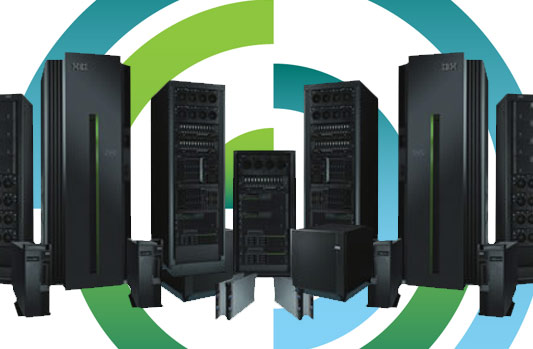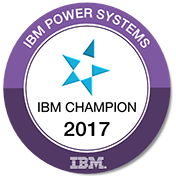
Ron Gordon
Director – Power Systems

The Power Systems Technical University was held in Orlando from June 5-9. The overall rating was 4.56 out of 5.0, so the attendees had a very positive view of the event. There were 1580 attendees for the Power University, participating in 672 unique sessions. This event, unlike Edge in the past, is totally technical focused. If you missed this one, the next Power Technical University is scheduled for October 16-20 in New Orleans. My overall impression, based on speaking with many of the attendees, was that the information was excellent, timely, and applicable to their current education and operational needs. An additional input was that it was sometimes hard to choose which session to attend since most sessions were only offered once, and sometimes choosing was difficult. Here are some of my observations and a recap if you were not able to attend:
POWER9 – POWER9 was presented from a processor technology standpoint, and I was very pleased to see an overview of the servers that will be released over the next year. This was presented as starting with the Linux-only Scale-Out 24 core systems, by end of 2017; and the Scale-Out systems with AIX, IBM i, and Linux will be released in early first quarter 2018, along with the Enterprise systems in mid- 2018. At the October University, I expect that there will be much more public information presented on the POWER9 systems
AIX/PowerVM – IBM continues to advance AIX and PowerVM. AIX is growing with further functionality in security, performance, and integration of open source technologies like YUM, Chef, cloud-init, etc. PowerVM’s latest support of VNICs and SRIOV is being enhanced, along with faster LPM performance. I was pleased to see specific changes to support SAP Hana LPM function, by making sure the mobility function will not create a degradation due to insufficient resources on the destination server. The roadmaps for both AIX and PowerVM were presented, covering today through 2025.
Open Source – There was a strong emphasis on open source, community-driven technologies and Linux. Presentations from Ubuntu, Red Hat and SUSE showed their commitments to POWER technology, as well as their current enhancements, functionality and roadmaps, which were also presented. Red Hat for one, presented their statement of direction for total consistency in functionality between x86 and POWER being implemented over time. In the community, Open Power is now over 300 participants. A new community called Open CAPI has been formed to exploit the CAPI capabilities that exist in POWER8, which will be expanded in POWER9. CAPI, CAPI-2, and CAPI-3 were presented, with CAPI-2 and CAPI-3 being POWER9-oriented, showing significant performance and functionality changes, as well as a connection to a new breed of devices (i.e., memory, NVMe, etc.). Also, CAPI SNAP was presented, which is a programming framework to greatly ease the programming for the CAPI capabilities.
Management – Power Systems is making significant changes and enhancements to management capabilities. One change will be the availability of the HMC code to run on Linux on Power. This means that the physical HMC x86 hardware is no longer the only choice. When released, the HMC functionality can be on a scale-out Linux system (i.e., S812L) or in a Power Systems LPAR. There are some limitations such as, the HMC cannot manage the system the code is running on, but more information will be made available in third quarter 2017. This compliments the Virtual HMC and the standard HMC offerings, and provides new options to Power Systems. The HMC standard interface will no longer be supported, and customers are advised to use the enhanced interface. The HMC and HMC code release roadmap was presented for planning purposes. PowerVC enhancements and roadmap were presented, as well as the roadmap for NovaLink. With the withdrawal from marketing of PowerKVM, the advice to utilize the KVM was presented in the distributors stack (i.e., RHEV or Ubuntu KVM). SLES KVM is not yet supported.
This was a quick and high-level overview of the selected topics from Power Tech U, and more details are available.
Please contact your Mainline Account Executive directly, or click here to contact us with any questions.
